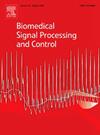Efficient multiscale weighted features based residual ConvLSTM method to detect Parkinson’s disease using electroencephalogram data
IF 4.9
2区 医学
Q1 ENGINEERING, BIOMEDICAL
引用次数: 0
Abstract
Parkinson’s Disease (PD) is a neurological disease that affects the psychological and neural systems. Various factors, including age, medications, and disease state, can affect the Electroencephalogram (EEG) signal. It becomes difficult to establish common features to identify PD. So, this research developed a powerful PD detection model using deep learning to overcome such challenges. Initially, data is taken from different sources. Here, the wave features, temporal features, spatial features, spectral features, and deep features are extracted from the collected data, where the deep features is extracted using the Autoencoder (AE). Then, the extracted features are fed into the Multiscale Weighted Features-based Residual Convolutional Long Short Term Memory (MWF-RconvLSTM). The multiscale weighted features incorporated in the developed model can effectively solve the complexity issue while detecting the disease. Further, convolutional LSTM in the proposed model significantly enhances the model’s ability to understand complex features in the detection of PD. Here, the weights are optimized using the developed Enhanced Peafowl Optimization Algorithm (EPOA). Weight optimization using the developed EPOA can enhance the effectiveness of PD detection. Moreover, the developed model is evaluated with various models to display the effective performance in detecting PD. Finally, the developed EPOA-MWF-RconvLSTM model offers the best result in terms of accuracy is 94.97. Moreover, the conventional model like DMO-MWF-RconvLSTM, BFGO-MWF-RconvLSTM, RHA-MWF-RconvLSTM, and POA-MWF-RconvLSTM achieved the accuracy to be 80.02, 88.49, 82.01, and 90.87. This confirmed that the recommended model is more successful in the detection of PD than other existing models.
基于多尺度加权特征的残差ConvLSTM脑电图检测帕金森病方法
帕金森病(PD)是一种影响心理和神经系统的神经系统疾病。各种因素,包括年龄、药物和疾病状态,都可以影响脑电图(EEG)信号。很难建立共同的特征来识别PD。因此,本研究开发了一个强大的PD检测模型,利用深度学习来克服这些挑战。最初,数据来自不同的来源。在这里,从采集的数据中提取波特征、时间特征、空间特征、光谱特征和深度特征,其中深度特征使用自动编码器(AE)进行提取。然后,将提取的特征输入到基于多尺度加权特征的残差卷积长短期记忆(MWF-RconvLSTM)中。该模型中引入的多尺度加权特征可以有效地解决疾病检测的复杂性问题。此外,该模型中的卷积LSTM显著增强了模型在PD检测中理解复杂特征的能力。在这里,使用开发的增强型孔雀优化算法(EPOA)对权重进行优化。利用该方法进行权值优化,可以提高PD检测的有效性。此外,用各种模型对所建立的模型进行了评估,以显示该模型在PD检测中的有效性能。最后,所建立的epa - mwf - rconvlstm模型准确率最高,达到94.97。DMO-MWF-RconvLSTM、BFGO-MWF-RconvLSTM、rhaa - mwf - rconvlstm和POA-MWF-RconvLSTM的准确率分别为80.02、88.49、82.01和90.87。这证实了所推荐的模型在PD检测方面比其他现有模型更成功。
本文章由计算机程序翻译,如有差异,请以英文原文为准。
求助全文
约1分钟内获得全文
求助全文
来源期刊

Biomedical Signal Processing and Control
工程技术-工程:生物医学
CiteScore
9.80
自引率
13.70%
发文量
822
审稿时长
4 months
期刊介绍:
Biomedical Signal Processing and Control aims to provide a cross-disciplinary international forum for the interchange of information on research in the measurement and analysis of signals and images in clinical medicine and the biological sciences. Emphasis is placed on contributions dealing with the practical, applications-led research on the use of methods and devices in clinical diagnosis, patient monitoring and management.
Biomedical Signal Processing and Control reflects the main areas in which these methods are being used and developed at the interface of both engineering and clinical science. The scope of the journal is defined to include relevant review papers, technical notes, short communications and letters. Tutorial papers and special issues will also be published.
 求助内容:
求助内容: 应助结果提醒方式:
应助结果提醒方式:


